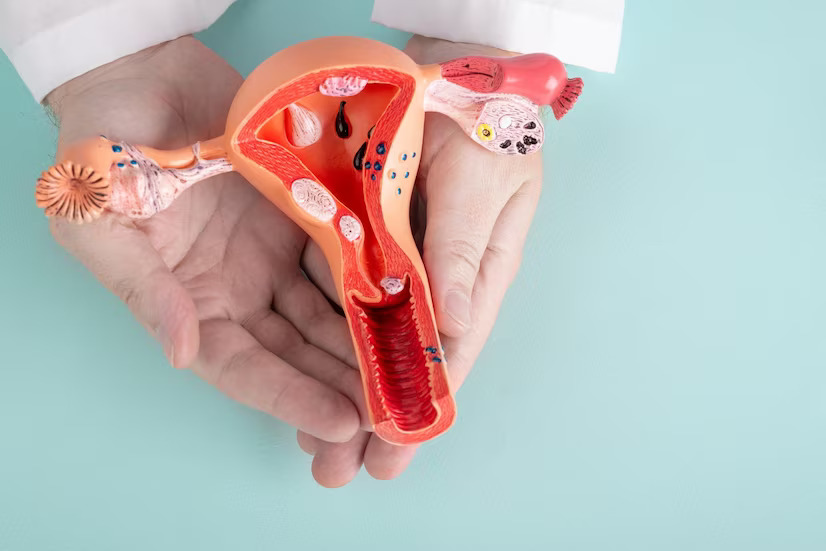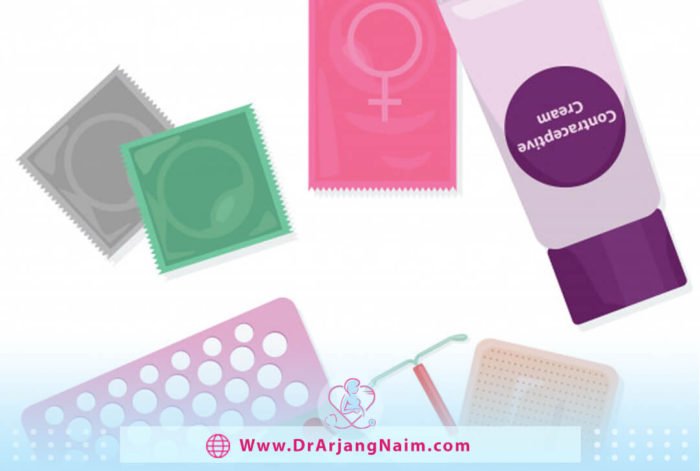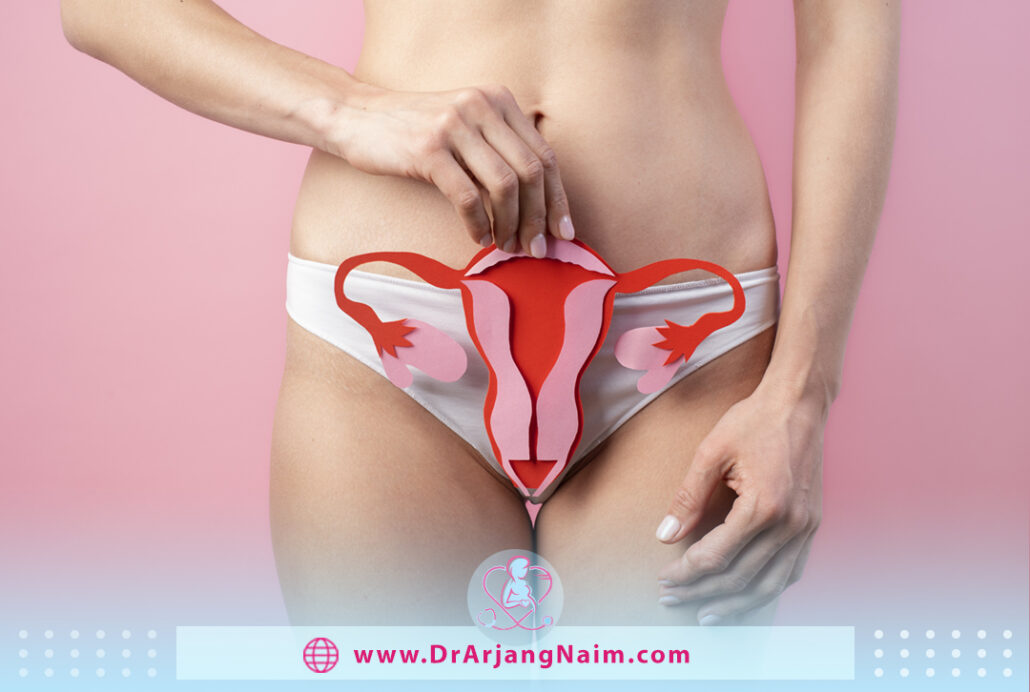What is the birth control and family planning service?

Birth Control & Family Planning service
Dr. Naim helps women in the Los Angeles area choose the right birth control options and provides them with a wide range of methods so that every woman can feel comfortable and confident in her birth control.

Types of birth control that Dr. Naim offers
Dr. Naim will provide you with a complete set of birth control options so that women can choose the option that suits their needs and preferences and feel more relaxed with this control method while not harming their health. Some of these options include:
- Birth control pills
- Diaphragms
- Arm implants
- Intrauterine devices (IUDs)
- Tubal ligation
- Patches
Birth control pills
The type of birth control you use is a personal decision, and many options exist. If you are sexually active and can get pregnant, you can consider birth control pills.
Birth control pills, also called oral contraceptives, are drugs taken orally to prevent pregnancy. According to the Food and Drug Administration (FDA), they are an effective method of birth control with a success rate of about 91 percent.
Birth control pills are oral contraceptives containing small amounts of the same hormones the body uses as part of the menstrual cycle.
The hormones in birth control pills prevent pregnancy by stopping ovulation or releasing an egg from the ovary. Some birth control pills also temporarily change the lining of the uterus, so it is less likely that a fertilized egg will implant.


Diaphragm fitting
During the transfer, you will lie on a test table and use a speculum that gently expands your vagina so that Dr. Naim can access your cervix. The diaphragm is pulled to the top of the cervix to prevent sperm from entering the uterus. Once Dr. Naim has determined the right size, you can practice inserting the diaphragm to make sure you know how to position it correctly. Diaphragms should be used with spermicide.
Arm implants
Contraceptive implants are a long-term contraceptive option for women. A contraceptive implant is a flexible plastic rod about the size of a matchstick placed under the arm’s skin.
It releases a small and constant dose of progestational hormone to thicken the cervical mucus and thin the inner lining of the uterus (endometrium). Contraceptive implants usually also suppress ovulation.


IUD insertion
IUDs are easy to insert and only take a few minutes in Dr. Naim’s office. You are in the same position as you are for a pelvic exam. You may be given a local anesthetic to make it easier to insert. The IUD is shaped like a “T” and enters your uterus through your cervix. A long plastic “tail” hangs on your vaginal canal. Before having sex, you should always check that the plastic tail is in place, indicating that your IUD is still in its proper position. Once you’ve entered your IUD, you’ll need to follow up for a few weeks to make sure the device is still there.
Tubal ligation
Tubal ligation or tubal sterilization is a form of permanent contraception. During a tubal ligation, the fallopian tubes are cut, tied, or blocked to prevent pregnancy permanently.
In some cases, tubal ligation can be reversed, but many are unsuccessful. For this reason, before you do this, make sure that you do not want to have a child for the rest of your life.


Patches
A birth control patch is a contraceptive containing estrogen and progesterone.
Once a week for three weeks, you place a small patch on your skin for 21 days using the same patch. In the fourth week, you do not use the patch, which allows menstrual bleeding to occur.
The contraceptive patch works in the same way as combined contraceptive pills. The birth control patch prevents pregnancy by releasing hormones into the bloodstream that prevent the ovaries from releasing eggs. The contraceptive patch also thickens the cervical mucus to prevent sperm from reaching the egg.
About Dr.Naim
Arjang Naim is an established and highly skilled physician with over 20 years of experience in obstetrics and gynecology.
He is best ob-gyn in Los Angeles and surrounding communities. He has been practicing medicine since 2001 from two locations in Los Angeles, an office near Beverly Hills and Beverly center, and the other in Hollywood across from children’s hospitals and Hollywood Presbyterian Medical Center.
After obtaining his Bachelor’s degree from UCLA, he spent four years in New York City to study medicine at the prestigious Mount Sinai School of Medicine. His residency in OB/GYN was at Maimonides Medical Center, which happens to be one of the busiest hospitals in New York.
Dr. Naim will provide you with a complete set of birth control options so that women can choose the option that suits their needs.
Dr. Naim’s services in birth control and family planning
There are many factors to consider when choosing the most appropriate contraceptive method for women, men, or couples at any stage of life. These elements include safety, effectiveness, availability, and acceptability. Informed choice of contraceptive methods is an essential guiding principle, and contraceptive counseling, when possible, plays an important role in the successful use of contraceptive methods.
Dr. Naim helps women choose the right birth control options and provide them with a wide range of methods.

Choosing a method of birth control is a completely personal decision. You and your partner should explore several birth controls options available and choose the best method for you. Many people change their birth control methods several times during their childbearing years. There are several points to consider when choosing a birth control method.
- How effective is the method?
- How safe is the method?
- How likely are you to use it? Will you use it if you have to put it in place every time?
- Can you remember to take a pill every day?
- Is it affordable?
- Is the method permanent, or can it be reversed?
In choosing a contraceptive method, dual protection against the concurrent risk of HIV and other sexually transmitted diseases should also be considered. Although hormonal contraceptives and IUDs are very effective at preventing pregnancy, they do not protect against sexually transmitted diseases, including HIV. Continuous and correct use of male latex condoms reduces the risk of transmission of sexually transmitted diseases, including chlamydia infection, gonococcal infection, and trichomoniasis.
Did you know?
You may have to try many pill brands before finding the right one.
Pre-existing medical conditions or other health problems such as high blood pressure, smoking, and a family history of breast cancer are important factors that you and your doctor should consider when choosing the best birth control method.
You may have to try different birth control methods and different brands of birth control pills to find the best option for you.
Some birth control options have common side effects that may not exist with other methods. For example, if you get headaches while taking the pill, you can talk to your doctor about switching to a progesterone-only option or a non-hormonal IUD.
Customer reviews
- Barrier methods
- Short-acting
- Hormonal methods
- Long-acting hormonal methods
- Sterilization
- Spermicide or vaginal gel
- Fertility awareness methods
Although contraceptives can be taken at any time of the day, it is best not to take them on an empty stomach. It is best to take it before going to bed or around dinnertime to prevent nausea.
Contraception prevents unwanted pregnancy, either within or outside the family. Family planning is designed to help couples achieve their fertility goals. This may include contraception to delay or prevent pregnancy, infertility treatment, adoption, or abortion.
You will need additional contraception for seven days until you are off the pill. If you start the pill after the fifth day of your cycle, make sure you haven’t put yourself at risk of pregnancy since your last period.
A copper-coated IUD prevents pregnancy by preventing sperm from fertilizing an egg. It may also make it more difficult for a fertilized egg to implant in the uterus. A progestin-coated IUD works similarly, but it thickens the cervical mucus and thins the uterine lining.







